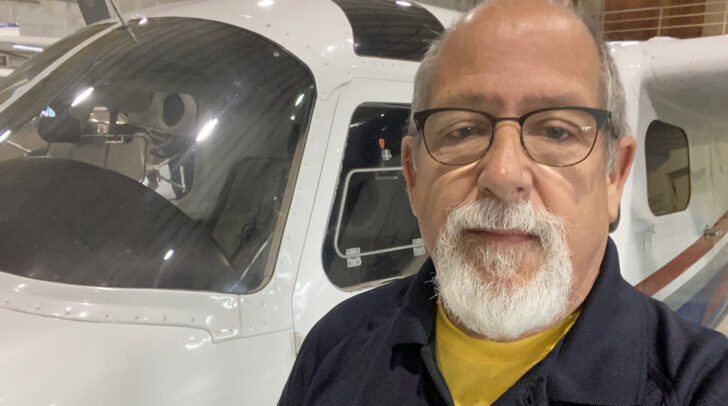
Thirty-four years is a long time to be in a relationship.
Twin Commander pilot Bruce Stamey hasn’t just flown Twin Commanders for more than three decades. He’s flown the same Twin Commander for 34 years, all with the state of Louisiana.
Stamey’s entrance to aviation was a bit unusual. He took a pause at college to work and earn more money so he could finish a degree in architecture. During that time, he was working for an engineering firm doing a variety of jobs when the company’s president approached him with an offer he couldn’t refuse. He was asked to be his pilot. Only one problem—Stamey didn’t have a pilot’s certificate. In fact, he had never flown an airplane before. He immediately started training and earned a certificate three weeks later. “And I’ve been useless ever since,” he joked.
A few years with the engineering firm, then some pipeline patrol, instructing, and charter to build time, and soon Stamey was able to secure an opening with the state. “Basically, I was hired there because the flying was low-level and I had pipeline experience.”

In 1987, soon after arriving, he was checked out in N57266, a 1974 Shrike. At that time, he was flying for the wildlife agency, and the airplane was primarily used for transportation. Once a year they would fly to the Northwest Territories in Canada to do informal waterfowl surveys. Stamey said that two-thirds of North American waterfowl come through Louisiana each year, so the state would fly to northern Canada to see what they should expect in the coming migration.

After 11 years with the wildlife agency Stamey said the airplane was in need of engines, paint, bladders, and a lot more. “You name it, it needed it.” The agency didn’t have the money to do the upgrades, so it was transferred to the state’s Department of Environmental Quality. Over a period of six months they updated everything to modern standards, and then Stamey transferred over in order to fly it. Again, it was used primarily for transportation. The federal Environmental Protection Agency’s regional office is in Dallas. Stamey often made the trip from Baton Rouge, where the airplane has always been based, to Dallas for staff training and meetings. He also spent time flying over oil spills and other natural disasters.
Finally, last year the DEQ also ran headfirst into budget cuts. The Louisiana State Police took the airplane. And as the Shrike went, so went Stamey. As in its previous two roles the airplane is primarily used for transportation. It shuttles detectives around for investigations and serves as executive transport. In what sounds like an ideal flying job, Stamey rarely has overnights. He estimates around six times a year he’ll go on longer trips or have a few nights away while someone is at a training session.
For 25 of those 34 years Stamey has been the only assigned and qualified pilot on the Shrike. That makes his situation all the more unique, and the state all the more dependent on his services. Although the police have two 172s for speed detail, most of the pilots fly only rotorcraft. In anticipation of retiring in two or three years, Stamey is starting to train N57266’s next generation of pilots. And that presents a problem.
When you’re used to flying one airplane for so long, being able to describe what you do and why you do it can be challenging. “Everything feels so second nature,” he said. “They ask me ‘what speed’ and I tell them I don’t know. I just do what feels right.”

The state has treated the airplane well. Currently the panel has a Garmin G600 on the pilot’s side and a center stack with a G750 and a G650. They are planning to add another G600 to the right side soon. It has about 8,000 hours on the airframe, and Stamey estimates he’s flown about 85 percent of those hours. He says he’s only had one mechanical problem, when a main gear came down and the tire didn’t rotate. “It was a non-event.”
When he retires Stamey hopes to keep his foot in aviation. The state even has a program where he may be able to fly part time. It’s clear he’s not yet ready to say goodbye to the Shrike.
“I love the Commander,” he said. “It’s a great airplane. I feel like the state should donate her to me when I walk out the door after 36 years.”
